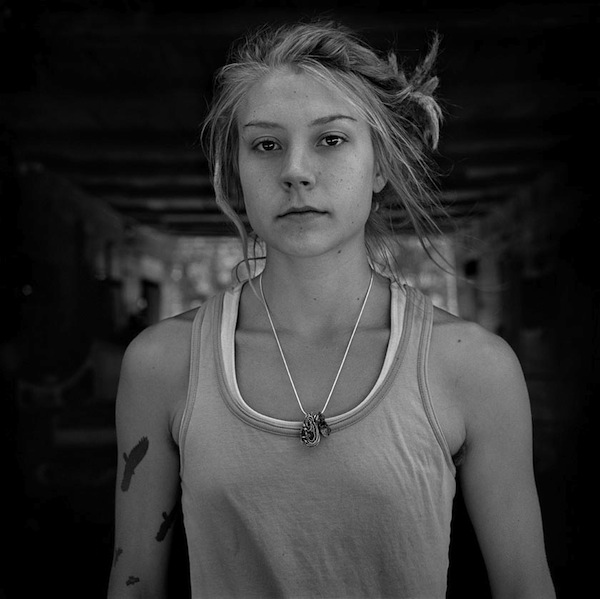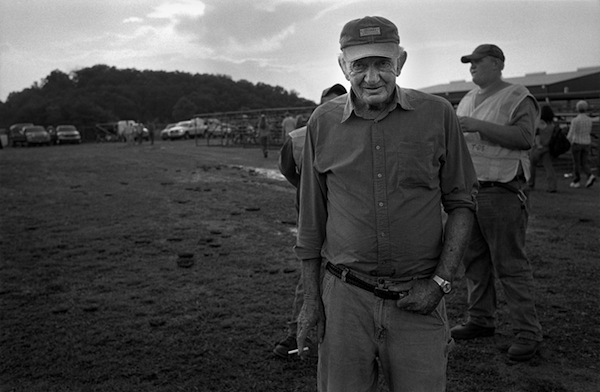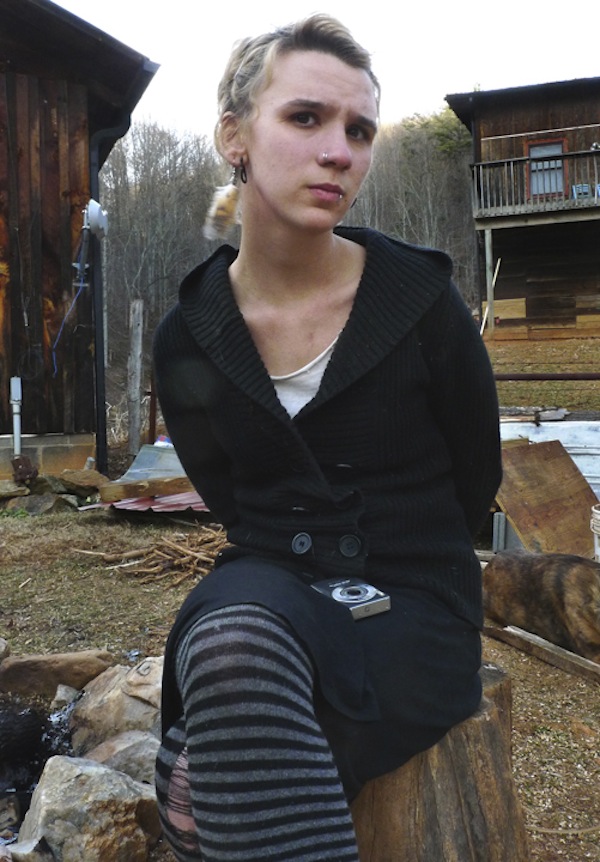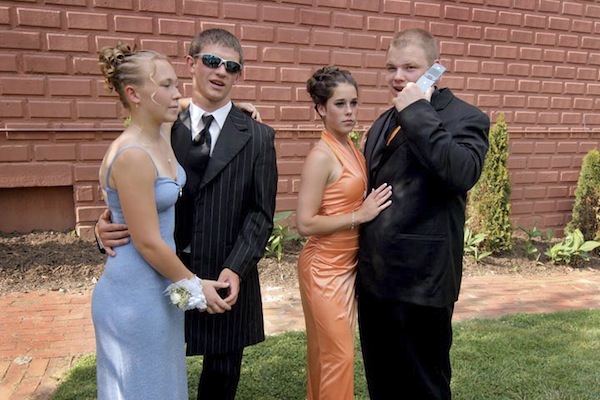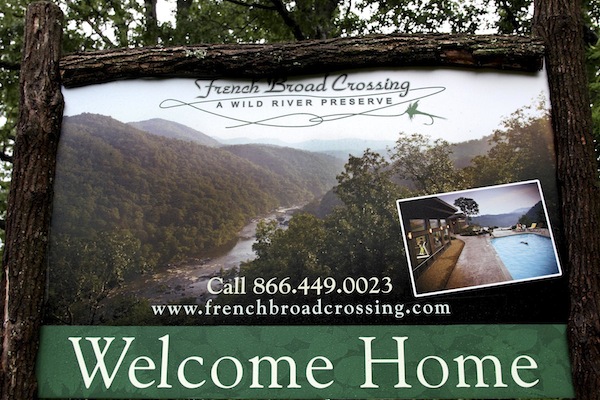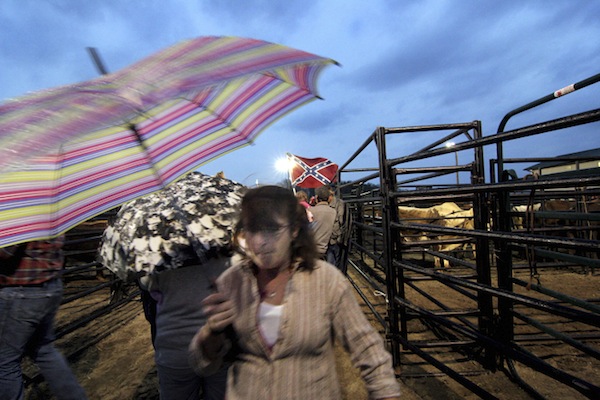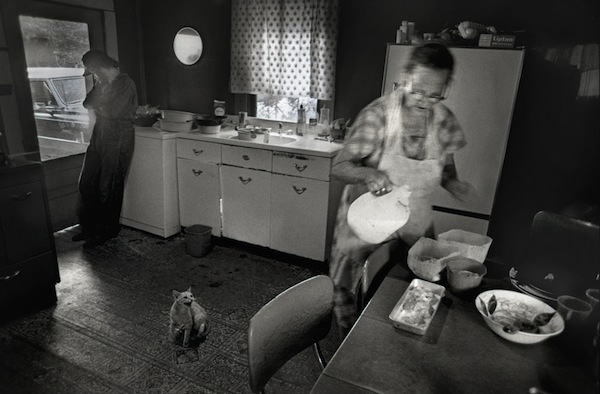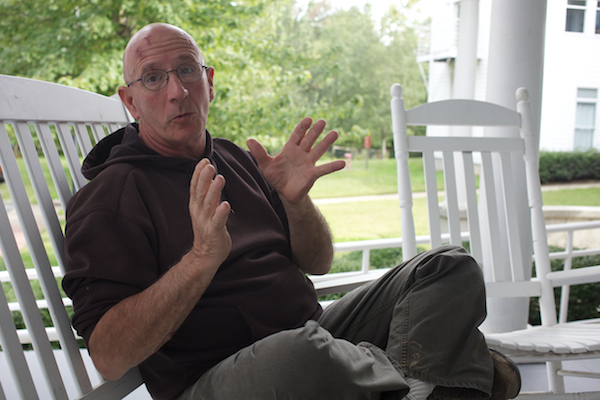 In Rob Amberg's essay Looking for Place, he writes about place, stereotypes, the dynamics of mountain culture, and the collective truth sought through documenting Appalachia. His genuineness and candor are as evident in his writing and photographs as they are in person. It's one thing to hold a photographer's book, to study the photographs and process what the photographer has written. It's another thing altogether to spend hours with a photographer while realizing that the authenticity of the work and the person are inseparable. Rob Amberg is the real deal. His pictures say it, but so does he.
In Rob Amberg's essay Looking for Place, he writes about place, stereotypes, the dynamics of mountain culture, and the collective truth sought through documenting Appalachia. His genuineness and candor are as evident in his writing and photographs as they are in person. It's one thing to hold a photographer's book, to study the photographs and process what the photographer has written. It's another thing altogether to spend hours with a photographer while realizing that the authenticity of the work and the person are inseparable. Rob Amberg is the real deal. His pictures say it, but so does he.
The first work I saw of Amberg's was his Sodom Laurel Album (2002) book, which straightaway became my favorite Appalachian photobook and the book I've pointed people to when asked about the kind of book I'd like to do someday. I've spent hours with this book, studying the photographs, paying attention to the sequencing of the pictures, the layout, the text. It isn't just a visual story of Appalachian people and place, it's inseparably bound by wonderfully written vignettes into the lives of those, including Amberg, who grace these pages. Amberg offers us publicly the type of honesty and vulnerability one would expect in a private journal:
"Junior and I got into a heated argument once. It started over a card game, but was more complicated than that. It involved some things I had said I would do that I didn't follow through on. He had trusted me, counted me as someone who treated him differently, and I had dismissed him, just like everyone else."
Sodom Laurel Album is the kind of photobook I can't pass by and not buy (think Mel Gibson's compulsion to buy The Catcher in the Rye in Conspiracy Theory). I've probably given away a half-dozen copies to friends over the years and I still have two on my bookshelf. I've only recently added The New Road: I-26 and the Footprints of Progress in Appalachia (2009) to my collection, but after flipping through it cover to cover, I'm sold.
When we talked on the porch of the Center for Documentary Studies in late September, Amberg was in town working on Madison County Stories, an exhibition of his new work (as Visiting Artist at Duke University) along with photographs and digital stories by Duke students and middle school youth in the Spring Creek Literacy Project in Madison County, North Carolina.
I was excited to hear that Amberg has been working on a third book project of Madison County photographs in a series he's calling ShatterZone. Here's an excerpt from the project introduction:
...If one thinks of a “shatter zone” in geological terms, that is, as an area of randomly fissured or cracked rock, possibly filled with mineral deposits that form a network of veins, Madison fits the definition. The mountains here are old, not the oldest on Earth, but ancient, worn and broken from age. The veins of these mountains don’t contain coal, or natural gas, but this lack of significant mineral wealth hasn’t stopped man from exploiting what is here – water, forests, and soil – all products of that fissured rock. From the massive clearcut early in the 20th century of what was once the largest and most diverse hardwood forest in North America, to the introduction and overuse of inorganic fertilizers and pesticides, to overdevelopment and the loss of wildness resulting from projects like the construction of I-26, the largest earthmoving project in North Carolina history, man has left an indelible footprint on Madison County’s topography...
...I sometimes think of my mind as a shatter zone – a place of cracks and fissures, each filled with contradictory and fractious thoughts and opinions about this place and our desire to live here. “You’ve got to be crazy to live out there,” is a not uncommon remark from non-residents and most people understand it takes a particular type of person – something new residents learn early in their stay. It’s not for everyone. It takes a total rethinking of your relationship within a community and requires new skills, new tools, and new ways of interacting within your surroundings. One can see the points of conflict – zoning, land use, politics, religion, culture, language – and the potential each provides for fracturing the community. Living here now is often a lesson in compromise; a reminder of man’s continual need for tolerance...
ShatterZone - selected images from a work in progress:
What I appreciate about this body of work is its authenticity, which I've come to expect from Amberg. For me, the mix of black and white and color images is best explained in this section from ShatterZone's introduction - "When I think of present-day Madison County I think of a place where people come to get away. I hear this expressed in people’s language when they speak of why they moved here; and in the words of locals explaining why they’ve never left." Present and past, these images are about community and relationship to community.
Context is not lost, which is often the case when we talk about and look at images of Appalachia. And Amberg doesn't shy away from the complexities of this mountain place. There's an awareness, and self-awareness, of a cultural matrix in this work that touches on being from Appalachia and being of Appalachia. There is no clear distinction, no low-hanging fruit, and therein lies the hard work of photographing Appalachia today.
When I think about how the world looks at us as Appalachians - me as a West Virginian, I'm reminded that it's imperative that we also look at ourselves and explore what that might mean. Have we ourselves bought into the romanticized notion of what Appalachia looks like? The wizened, weather-beaten mountaineer. Do we apply "AppalachiaGram" filters - the trailer, the dirty child, the snake-handler - for easier consumption and distribution because that's what we've been shown? Or do we cry foul when these types of images surface, not because they're not true, but because they don't "put us in a good light?"
As I continue to look at Appalachian photographs, I'm reminded that photography is more than just light and Appalachia is more than a stereotype. In Amberg's words, "Each of us comes to the work from our own distinct point of view that includes our own baggage. Art engages the personal and the universal. It’s the nature of what artists do. But I’ve often thought that of all the work produced from this region, no writer or documentarian gets it completely right or represents it for the totality of place."
NOTE: Rob Amberg will be presenting a new exhibition of work this Friday, 30 November 2012, from 6-9 p.m. at Duke University's Fredric Jameson Gallery. Details here.
Photographs: 1. Rob Amberg on the porch of the Center for Documentary Studies at Duke, Sunday, 30 September 2012. (RM) 2. Sodom Laurel Album, 2002 and The New Road, 2009. (RM)
ShatterZone photographs: 1. Kelsey, Paw Paw, Madison County, NC, 2012. 2. The cut at Buckner Gap, Upper Laurel, Madison County, NC, 2007. 3. Rodeo #2, Van Griffin, Marshall, Madison County, NC, 2012. 4. At the Madison County jail, Marshall, Madison County, NC, 2011. 5. Rodeo #1, Mike Schleicher, Marshall, Madison County, NC, 2012. 6. Wayne Uffelman, Paw Paw, Madison County, NC, 2010. 7. Boy with jawbone, Walnut, Madison County, NC, 2007. 8. Rodney Webb with mushrooms, Shelton Laurel, Madison County, NC, 2012. 9. My daughter Kate, Paw Paw, Madison County, NC, 2011. 10. Moosehead, Paw Paw, Madison County, NC, 2012. 11. Madison High Senior Prom, Mars Hill, Madison County, NC, 2009. 12. Suzie Mosher, the Flower Lady, Chapel Hill, Madison County, NC, 2012. 13. Marshall Christmas Parade, Marshall, Madison County, NC, 2011. 14. Stripper at Harley Rally, Hot Springs, Madison County, NC, 2012. 15. French Broad Crossing Development, Hopewell, Madison County, NC, 2011. 16. At the rodeo, Marshall, Madison County, NC, 2011.
All ShatterZone photographs © Rob Amberg.

